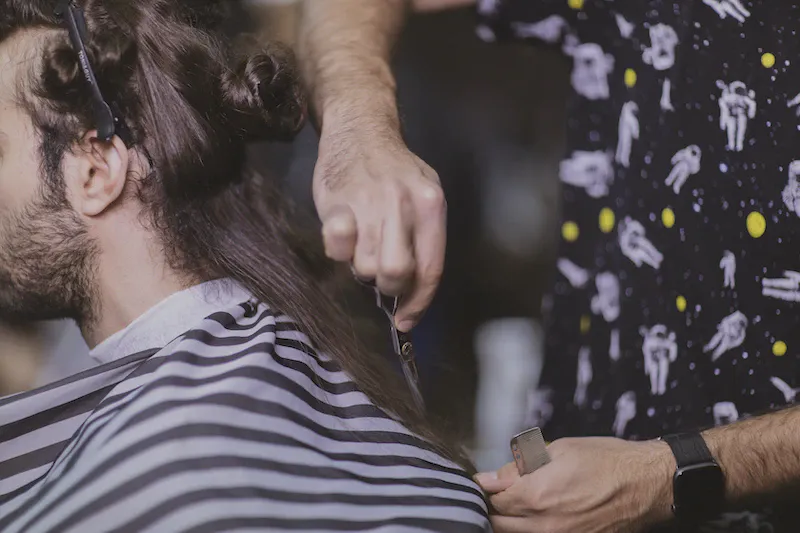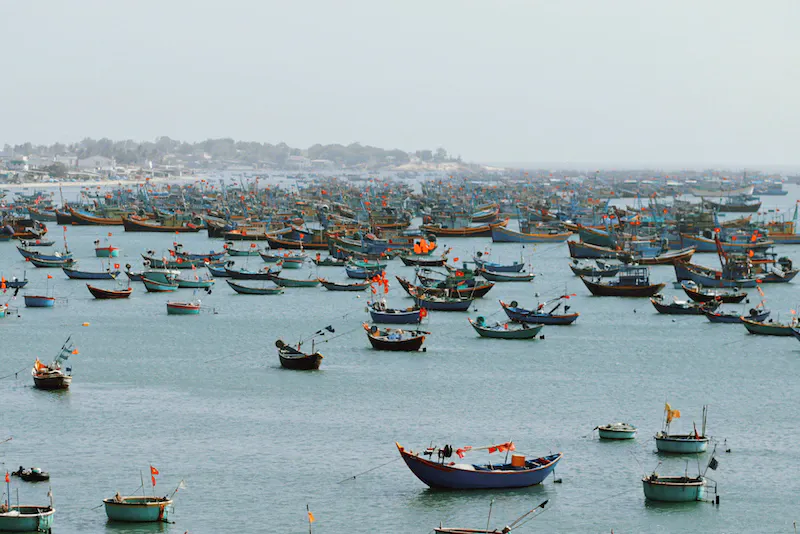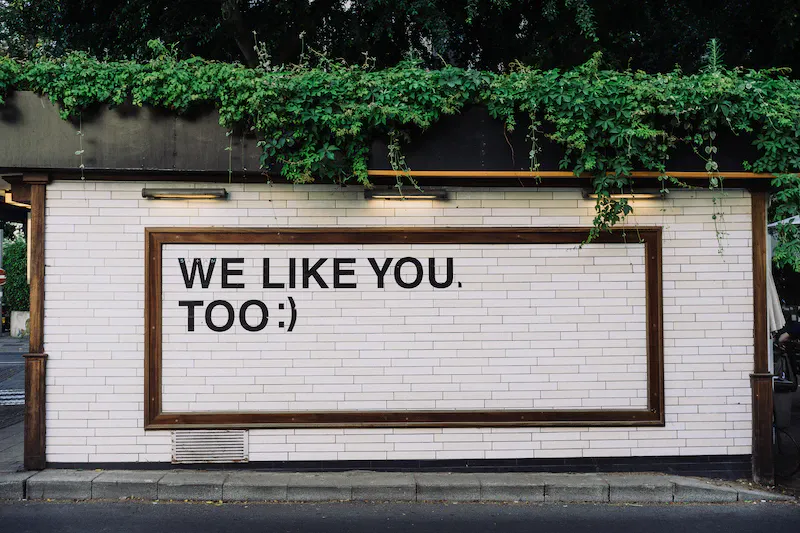Fighting for Equality: A Glimpse into Womens Lives in Iran

Growing up in Iran: Fighting Oppression and Inequality
The story of the speaker in the video script highlights the struggles faced by many women in Iran, where oppressive laws and societal norms restrict their basic rights and freedoms. The speaker grew up in Iran and vividly describes her childhood memories of swimming in the Caspian Sea, but how that was taken away when she turned nine and was legally considered a woman, forced to wear restrictive clothing and cover herself fully when swimming.
The oppressive laws and societal norms in Iran extend far beyond just swimming attire. Women have almost no access to basic rights, such as divorce, custody of their children, and even travel. They are not allowed to sing in public or have sex outside of marriage. They are only allowed to show their face and hands in public, and even that is strictly regulated. These restrictions are symbolic of the larger issue of inequality and oppression faced by women in Iran.
The speaker’s experience of escaping Iran with her mother and baby sister at the age of 12, after years of living in refugee camps and being at the mercy of people smugglers, highlights the extreme lengths that some women have to go to in order to escape the oppressive regime. For those who cannot leave, there seems to be little hope for change.
However, recent protests sparked by the tragic death of Mahsa Amini, who was arrested by the morality police for showing too much hair, have given hope that change may be possible. Women in Iran are defying the strict morality laws, taking off their headscarves and burning them in bonfires. They are chanting for equality, freedom, and democracy. These protests have faced a brutal crackdown from the Iranian regime, with reports of torture and public executions of protesters.
Despite the challenges and brutal crackdowns, hope remains. The speaker in the video script emphasizes the importance of staying informed and engaged with the Iranian protests. Non-Iranians and Iranians outside of Iran have been signing petitions, going to protests, and putting pressure on their governments to put pressure on the Iranian regime. The hope is that with continued pressure and activism, change may become a reality, not just for women in Iran, but for everyone, everywhere.
Childhood Memories and Restrictions on Women in Iran
The speaker in the video script recalls her childhood memories of swimming in the Caspian Sea and how those memories were rewritten when she turned nine and was forced to wear restrictive clothing and cover herself fully when swimming. This experience highlights the strict morality laws in Iran that restrict women’s basic rights and freedoms.
In the Islamic Republic of Iran, when a girl turns nine, she is considered a woman and is legally required to follow a series of restrictive rules written by men, such as the mandatory wearing of the hijab. This means that women must cover themselves from head to toe, including wearing a pair of trousers, a long-sleeved top, and a loose covering called the mantou, as well as the headscarf.
These restrictive clothing requirements extend beyond just swimming attire. Women are not allowed to show any part of their body in public, and the morality police patrol public spaces, making sure that women are not showing too much hair or too much skin. The speaker recalls feeling the watchful eyes of the morality police while in the water, making sure that she and the other girls weren’t arousing the men.
These restrictions on women’s clothing are symbolic of the larger issue of inequality and oppression faced by women in Iran. They are second-class citizens and have almost no access to basic rights, such as divorce, custody of their children, and even travel. They are not allowed to sing in public or have sex outside of marriage.
These oppressive laws and societal norms in Iran extend far beyond just clothing requirements. They are a daily reality for women living in Iran and something that they have to fight against every day. The speaker’s experience of escaping Iran with her mother and baby sister highlights the extreme lengths that some women have to go to in order to escape the oppressive regime.
However, recent protests sparked by the tragic death of Mahsa Amini have given hope that change may be possible. Women in Iran are defying the strict morality laws and fighting for equality and freedom. These protests have faced a brutal crackdown from the Iranian regime, but hope remains that change may become a reality.
The Fight for Women’s Basic Rights in Iran
Women in Iran are fighting for their basic rights and freedoms, which have been denied to them for far too long. They are demanding equality, dignity, and the right to live free from oppression and injustice.
Iranian women face numerous challenges and obstacles when it comes to exercising their basic rights. They have no legal protection against sexual harassment and domestic violence. They are not allowed to divorce their husbands unless their husband agrees, and they have very limited custody rights when it comes to their children.
The speaker in the video script highlights the fact that women in Iran are only allowed to show their face and hands in public. They are not allowed to speak out against the regime or express their opinions freely. This lack of freedom of speech and expression is a major obstacle in the fight for women’s basic rights in Iran.
However, recent protests sparked by the death of Mahsa Amini have given women in Iran hope that change is possible. Women are taking off their headscarves, burning them in bonfires, and cutting off their hair in protest of the strict morality laws. They are chanting slogans such as “women, life, freedom” and demanding democracy and freedom of speech.
The Iranian regime has responded to these protests with brutal force, including the arrest and torture of protesters and the public execution of those who dare to speak out. Despite these risks, women in Iran continue to fight for their basic rights and freedoms, and the hope remains that change will eventually come.
As people around the world, we must support the efforts of these brave women and continue to put pressure on the Iranian government to respect and protect the basic human rights of all its citizens, regardless of gender. Women’s rights are human rights, and we must stand in solidarity with those who are fighting for them in Iran and around the world.
The Tragic Death of Mahsa Amini and the Protests that Followed
Mahsa Amini was a 22-year-old Iranian woman who was arrested by the morality police for showing her hair in public. Three days later, she was found dead in police custody. Her tragic death sparked protests across Iran, with people demanding justice and an end to the oppressive regime.
The protests that followed Mahsa’s death were some of the largest in Iran since the formation of the Islamic Republic in 1979. Women in particular were at the forefront of these protests, defying the strict morality laws by taking off their headscarves and chanting slogans such as “women, life, freedom.”
The Iranian regime responded to these protests with violence, arresting thousands of protesters and using force to disperse crowds. There have been reports of torture, forced confessions, and public executions of protesters. The regime is desperate to suppress the protests and maintain its grip on power.
However, despite the risks, the protesters continue to demand justice for Mahsa and for all those who have been oppressed by the Iranian regime. They are fighting for a future where women have the same basic rights and freedoms as men, where people can express their opinions freely without fear of retribution, and where justice prevails.
As outsiders looking in, it’s important that we support the protesters in their fight for justice and equality. We can sign petitions, attend protests, and put pressure on our own governments to take action against the Iranian regime. We can increase the voices of those who are fighting for their basic human rights in Iran and help bring their struggle to the attention of the world.
Women in Iran Finally Daring to Defy Strict Morality Laws
For years, women in Iran have been subject to strict morality laws that restrict their freedoms and force them to adhere to a strict dress code. However, in recent months, women have been taking to the streets to defy these laws and demand their basic human rights.
Many women are taking off their headscarves, burning them in bonfires, and cutting off their hair as a form of protest. They are chanting slogans such as “women, life, freedom” and demanding equality and dignity.
This defiance is not without consequences, as women who break these laws risk arrest and imprisonment by the morality police. However, the women of Iran are showing tremendous courage in the face of such adversity, and their bravery is inspiring others to join them in their fight for justice.
The protests are not just limited to the streets. Women are also using social media to increase their message and connect with others who share their goals. They are sharing pictures and videos of themselves defying the dress code, and using hashtags such as #WhiteWednesdays and #MyCameraIsMyWeapon to spread their message.
The women of Iran are fighting for more than just the right to wear what they want. They are fighting for the right to make their own choices and have control over their own lives. They are fighting for equality and dignity, and for a future where their basic human rights are respected.
As outsiders looking in, we can support these brave women by increasing their voices, sharing their message, and putting pressure on our own governments to take action against the Iranian regime. We can stand in solidarity with these women and support their fight for justice and equality.
Hope for Change in Iran: A Brutal Crackdown and Deadly Consequences
Despite the hopeful signs of change in Iran, there has been a brutal crackdown on those who dare to defy the strict morality laws. The Iranian regime is desperate to quell any hope of change because they know that as long as people remain hopeless, they will continue to submit to their oppression and injustice.
Since the protests began, nearly 500 people have been killed, including almost 80 children, and around 18,000 protesters have been arrested. There are reports of psychological, physical, and sexual torture in prisons, as well as forced confessions and public executions of protesters. The regime has also targeted journalists and human rights activists who report on these violations.
Despite the crackdown, hope persists among those who continue to protest for democracy, freedom of speech, and freedom of expression. The protests have spread throughout Iran, and women are at the forefront of the movement, taking off their headscarves, burning them in bonfires, and cutting off their hair.
The author argues that hope is the only thing that can help create and sustain change, and that everyone can play a part in supporting the movement. People outside of Iran can sign petitions, go to protests, and put pressure on their governments to put pressure on the Iranian regime. Journalists and activists can report on the situation and help increase the voices of those fighting for change.
The situation in Iran remains uncertain, and the struggle for basic human rights and dignity continues. Despite the brutality of the regime’s crackdown, the author remains hopeful that change is possible, and that the people of Iran will one day be free to live their lives without fear and oppression.
The Importance of Staying Informed and Engaged with Iranian Protests
The speaker emphasizes the importance of staying informed and engaged with Iranian protests, even for those who are not directly affected. She urges individuals to sign petitions, attend protests, and put pressure on their governments to do the same. Protesters inside Iran have expressed how much it matters to them that people on the outside stay informed and engaged.
Despite the brutal crackdown and deadly consequences faced by protesters in Iran, there is hope for change. The speaker believes that hope is the only thing that can create and sustain change, and it is up to every single person to play their part.
As a journalist, the speaker cannot travel to Iran, but she stands in solidarity with the protesters by cutting her hair to show her support. She encourages others to do the same and to let those at sea know that they are seen and heard.
By staying informed and engaged with the situation in Iran, individuals can help create a future where freedom is not just a dream, but a reality. And this future is not just for women in Iran, but for everyone, everywhere.
Looking Towards a Future of Freedom and Equality, for Everyone, Everywhere
The speaker concludes by expressing hope for a future where everyone can enjoy freedom and equality, not just in Iran, but all over the world. She emphasizes the importance of hope, which can sustain and create change, and encourages people to play their part in promoting freedom and equality.
Despite the brutal crackdown on protests in Iran and the tragic death of Mahsa Amini, the speaker highlights the power of social media and brave journalists in bringing attention to the struggles of Iranian women. Women are now daring to defy strict morality laws, taking off their headscarves, burning them in bonfires, and cutting off their hair. They are fighting for basic rights like freedom of speech, expression, and democracy.
The speaker urges people to stay informed and engaged with the Iranian protests, even if they cannot physically travel to Iran. By signing petitions, going to protests, and putting pressure on their governments, people can show solidarity with the Iranian people and help create change.
In conclusion, the speaker stands with her hair in her hand, in solidarity with the movement for women’s rights in Iran. She hopes for a future where no little girl has to wish she were a boy to escape oppressive restrictions. A future where everyone, regardless of gender or background, can enjoy the basic human rights of freedom and equality.
Conclusion
The fight for women’s rights in Iran has been long and difficult, marked by moments of tragedy and triumph. Despite facing tremendous obstacles, including strict morality laws and oppressive societal norms, Iranian women have continued to push for change and demand their rights.
The story of Iran’s women’s rights movement is one of perseverance and toughness. It is a story of women who refuse to be silenced and who are willing to risk their lives for the cause of freedom and equality. Despite facing brutal crackdowns, they have continued to protest and raise their voices, demanding to be heard and to be treated as equals.
The tragic death of Mahsa Amini, the protests that followed, and the ongoing fight against strict morality laws have shown that the struggle for women’s rights in Iran is far from over. But there is hope for the future. The increasing number of women who are defying these laws and challenging societal norms is a sign that change is possible.
As the world watches and supports their efforts, it is important to stay informed and engaged with the ongoing protests and demonstrations. We must stand with the women of Iran in their fight for freedom and equality, and we must support their efforts to bring about lasting change.
The struggle for women’s rights in Iran is a reminder of the power of collective action and the importance of standing up for what is right, even in the face of immense adversity. It is a reminder that the fight for equality is far from over, and that we must continue to push for progress, both at home and abroad.
As we look towards a future of freedom and equality for everyone, everywhere, let us remember the women of Iran and their ongoing fight for justice. Let us continue to support their efforts and stand in solidarity with them as they work to build a better world for all of us.




